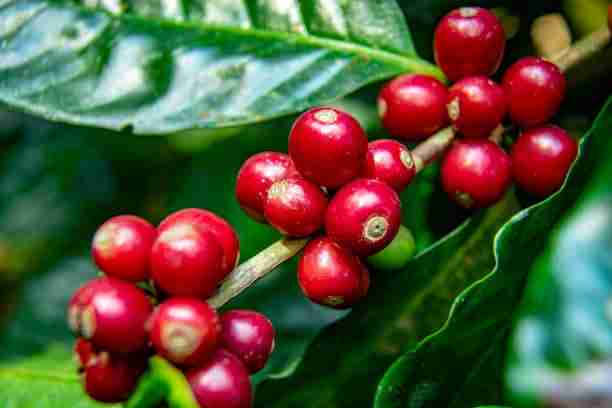Robusta Coffee, Get To Know Its Types And Characteristics
Makintau - Robusta comes from the word 'robust' which means strong, according to the picture of posture (body) or the level of viscosity is strong. Robusta coffee is not a species because it is a derivative of the Species Coffea canephora.
Robusta can grow in lowlands, but it is best located for cultivating this plant at an altitude of 400-800 meters above sea level. The optimal temperature of robusta coffee growth ranges from 24-30oC with rainfall of 2000-3000 mm per year.
Robusta coffee is perfect for growing in wet tropical regions. With intensive cultivation will begin to bear fruit at the age of 2.5 years. In order to bear fruit well, this plant needs a dry time of 3-4 months of the year with several rains.
Robusta coffee plants want loose soil and rich in organic matter. The ideal soil acidity level (pH) for this plant is 5.5-6.5. Robusta coffee is recommended to be cultivated under the shade of other trees.
Characterization of plants
The reproductive branches or wiwilan in robusta coffee grow perpendicularly. Coffee fruit is produced from primary branches that grow flat. This primary branch is flexible enough to form an umbrella-like header.
The shape of the leaves is rounded like an egg with pointed to blunt leaf tips. The leaves grow on stems, branches and twigs. On the stems and branches grow perpendicular to the arrangement of alternating leaves. While on the branches and branches horizontally pairs of leaves grow on the same plane. Robusta is more relatively resistant to leaf rust disease.
Robusta coffee plants have begun to flower at the age of 2 years. Flowers grow on the armpits of primary branches. Each armpit has 3-4 groups of flowers. Flowers usually bloom at the beginning of the dry season. Unlike arabica, robusta flowers cross-pollinate.
Young fruits are green, after cooking turn red. Although it has matured fully, robusta fruit sticks firmly to the stalk. The period from the start of flowering until the fruit is ready for harvest ranges from 10-11 months.
Robusta coffee plants have a shallow rooting. Therefore it requires fertile soil and rich in organic content. The plant is also quite sensitive to drought.
Types of robusta coffee clones
Robusta coffee is derived from several species especially Canephora. Perhaps for that reason, the source of plant seedlings for robusta is not called varieties but rather clones.
Similar to the variety in arabica, robusta superior clones in Indonesia were developed by Puslit Koka. Here are some types of robusta clones recommended by the agency:
Clone BP308. This clone is a superior plant that is resistant to nematode attacks. Another specialty of this robusta clone is that it is tolerant to less fertile soils. BP308 is recommended to be used as a rootstock, while the upper stem is connected with other clones adapted to the local agroclimate.
CLONE BP42. This type of clone has a productivity of 800-1200 kg / ha / year. His stature is medium with many branches and the segments are short. The resulting fruit is large and the dompolan is tight.
Sa436 clone. It has a fairly high productivity, reaching 1600-2800 kg / ha / year. The seed shape of this clone is small and the size is not uniform.
Clone BP234. Its productivity is 800-1200 kg/ha/year. Slender stature with long and supple branching. Fruit granules are rather small and their size is not uniform.
Product characteristics
In the market, robusta coffee is sold at a lower price than arabica. This leads to disincentives to farmers. So as to save the production costs of robusta farmers tend to ignore post-harvest handling. In turn, it will make the quality of the coffee produced low.
The aroma of robusta is not as strong as arabica, with a moderate to heavy viscosity (body) and bitter taste. Robusta caffeine content is more than twice that of arabica, which ranges from 1.7-4%.
Robusta coffee trade
About 99% of the world's coffee trade is robusta and arabica. Robusta coffee is widely produced by Asian-Pacific and African countries, while arabica coffee is widely produced by South American countries. The largest producer of robusta is Vietnam.
There is a paradox in the development of robusta trading. In the 1950s when it was first traded on the London exchange, the price level was relatively the same as arabica. At that time the proportion of robusta coffee market share was 25-30% and arabica 70-75%.
Things began to change when there was an increase in robusta coffee production. Currently where the market share rises above 30%, the price plummets below arabica to almost half. Of course, this is very worrying considering that more than 80% of Indonesia's coffee production is robusta.

Post a Comment for "Robusta Coffee, Get To Know Its Types And Characteristics"